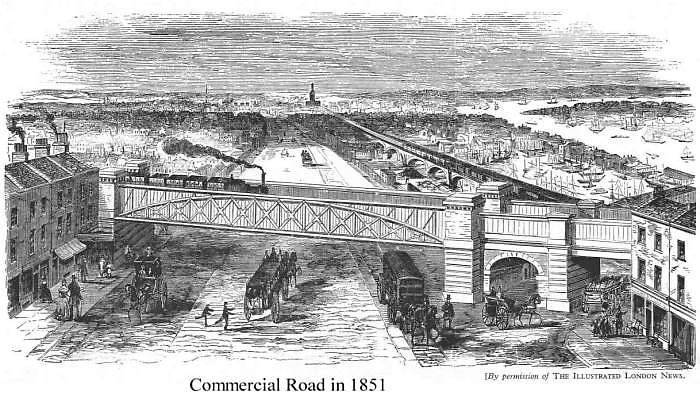| Home Page | Root Page | Census Records | GRO Records | Parish Records | Names Directory |
The picture below, from The Illustrated London News, shows Commercial Road as it was in 1851. The view is eastwards, with the Thames running parallel some way to the right. Crossing over the road is the 80-foot long iron 'bow string' railway bridge taking trains into Stepney Station, just to the right of the road.
Copenhagen Place, where Richard William (1) Woodhurst was living just a few years earlier in 1844, lies among the indistinct mass of streets seen to the left of Commercial Road behind the plume of smoke issuing from the train crossing the bridge.
Also running eastwards along the right of the road is the Blackwall Railway, carried on a multi-arched viaduct, and immediately to the right of this, in the foreground, can be seen the Limehouse Basin containing numerous ships. Where this railway passed alongside the basin it was covered over by a continuous canopy to prevent engine sparks from igniting the nearby shipping. This arrangement can be made out fairly clearly in the picture.
Generally the road was much busier than the picture suggests. In his work The Uncommercial Traveller, Charles Dickens makes reference to "pleasantly wallowing in the abundant mud of that thoroughfare and greatly enjoying the huge piles of buildings belonging to the sugar refiners, the little masts and vanes in small back gardens in back streets, the neighbouring canals and docks, the India vans lumbering along their stone tramway, and the pawnbrokers' shops where hard-up mates had pawned so many sextants and quadrants that I should have bought a few cheap if I had the least notion how to use them". The iron railway bridge, replaced in the 1870s, was dismantled and later re-erected across a ravine in Switzerland.
